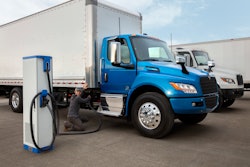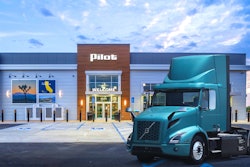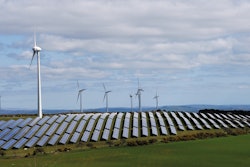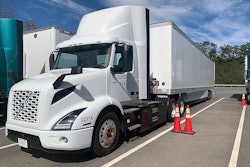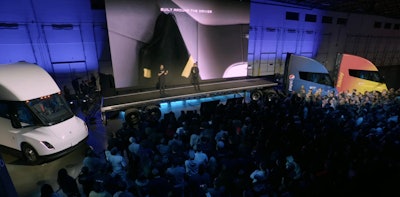
Tesla CEO Elon Musk Thursday night handed over his company's first production electric Semi trucks to PepsiCo.
Following its debut in November 2017, Semi was originally set for production in 2019. That date was delayed at least three times in the past three years as legacy OEMs like Paccar, Volvo, Mack, Freightliner and upstart Nikola place multiple electric trucks with fleet customers.
"I can't believe it's been five years," Musk recalled from the Tesla Gigafactory stage Thursday night. Musk himself bobtailed a Semi to the stage. "A lot has happened in the world but here we are. It's real... It looks sick. You want to drive that. It looks like it came from the future. It drives like a Tesla. If you're a truck driver, and you want the most badass rig on the road, this is it."
[Related: Elon Musk: Galactic pioneer or asphalt cowboy?]
Placing an order for 100 Semis in December 2017, just weeks after the truck made its debut, PepsiCo was among the early reservation holders for the Tesla all-electric tractor, and plans to use the trucks at its Frito-Lay plant in Modesto, California, and its PepsiCo beverages facility in Sacramento. PepsiCo CEO Ramon Laguarta has previously said transportation accounts for about 10% of Pepsi's greenhouse gas emissions.
"This is fantastic," said PepsiCo Foods North American CEO Steven Williams as he took ahold of the vehicle's key card. "We're thrilled."
Semi's first cargo run for PepsiCo was delivering a load of Frito-Lay chips to the launch event.
When Tesla officially entered the world of trucking 60 months ago, Musk promised to deliver an all-electric tractor with a 500-mile range. Barely five months later, he forecasted actual production units could hit 600 miles. Via the social media platform that he also owns, Musk tweeted last week – almost five years to the day of Semi's debut – that his company completed a 500 mile drive on a single charge grossed to 81,000 pounds (electric trucks get a 2,000 pound weight exception, allowing them to gross up to 82,000).
Musk noted that the truck was "fast" in acceleration – "three times the power," he said – yet didn't disclose any actual power configurations or output. Musk also did not disclose the curb weight of the Semi. He did, however, say the Semi uses "less than" 2kWh of battery power per mile, but didn't provide a specific number. Volvo's VNR Electric and Freightliner's eCascadia consume about 2 kWh per mile. The Peterbilt and Kenworth electric entries skew closer to 2.6 kWh per mile.
Prior to striking out on its test trek, Musk said durability testing had taken place "in every type of environment" including the 6% grade at Donner Pass. Much of the architecture of the truck itself is borrowed from the company's passenger cars, he said, imputing millions, if not billions, of miles of real world use.
Tesla plans to be its own customer, using Semis to transport goods between plants and suppliers "to close that feedback loop" and refine the truck, Musk said.
"These Semi trucks are running 24/7 between Sparks... and Tahoe," Musk said.
Semi uses a tri-motor powertrain system – the Plaid Model S and Model X powertrain – but enables two of the power units to disconnect so they are not free-spinning at cruise. The other two units are in reserve for torque and acceleration.
"You can pull 82,000 pounds at cruise and the only thing that's doing it is a tiny little motor on one axle," Musk said. "Just that one little guy is more powerful than a regular diesel engine on a semi truck."
A regen brake acts like an engine brake for slowing the unit while also delivering energy back into the batteries.
Musk said his company began pursuing a commercial tractor as part of its overall mission to reduce global emissions, noting that while commercial trucks are "only 1% of vehicle production, it's 20% of vehicle emissions."
Musk didn't take questions at the conclusion of Thursday's handoff and offered no updates or details on the trucks' weight, price or available configurations. When Semi debuted in 2017, Musk pegged pricing at around $200,000 depending on spec, but in the years since average costs have skyrocketed and that range is likely now unrealistic.
Musk and Tesla Truck Engineering Senior Manager Dan Priestley offered few details on the water-cooled megawatt fast chargers that will be used to resupply the batteries and did not say how long it would take to recharge the truck.
Tesla's Autopilot system and how it might be used on Semi also wasn’t mentioned during the presentation.
 Tesla CEO Elon Musk bobtailed a Semi to the stage at Thursday night's delivery event.
Tesla CEO Elon Musk bobtailed a Semi to the stage at Thursday night's delivery event.



